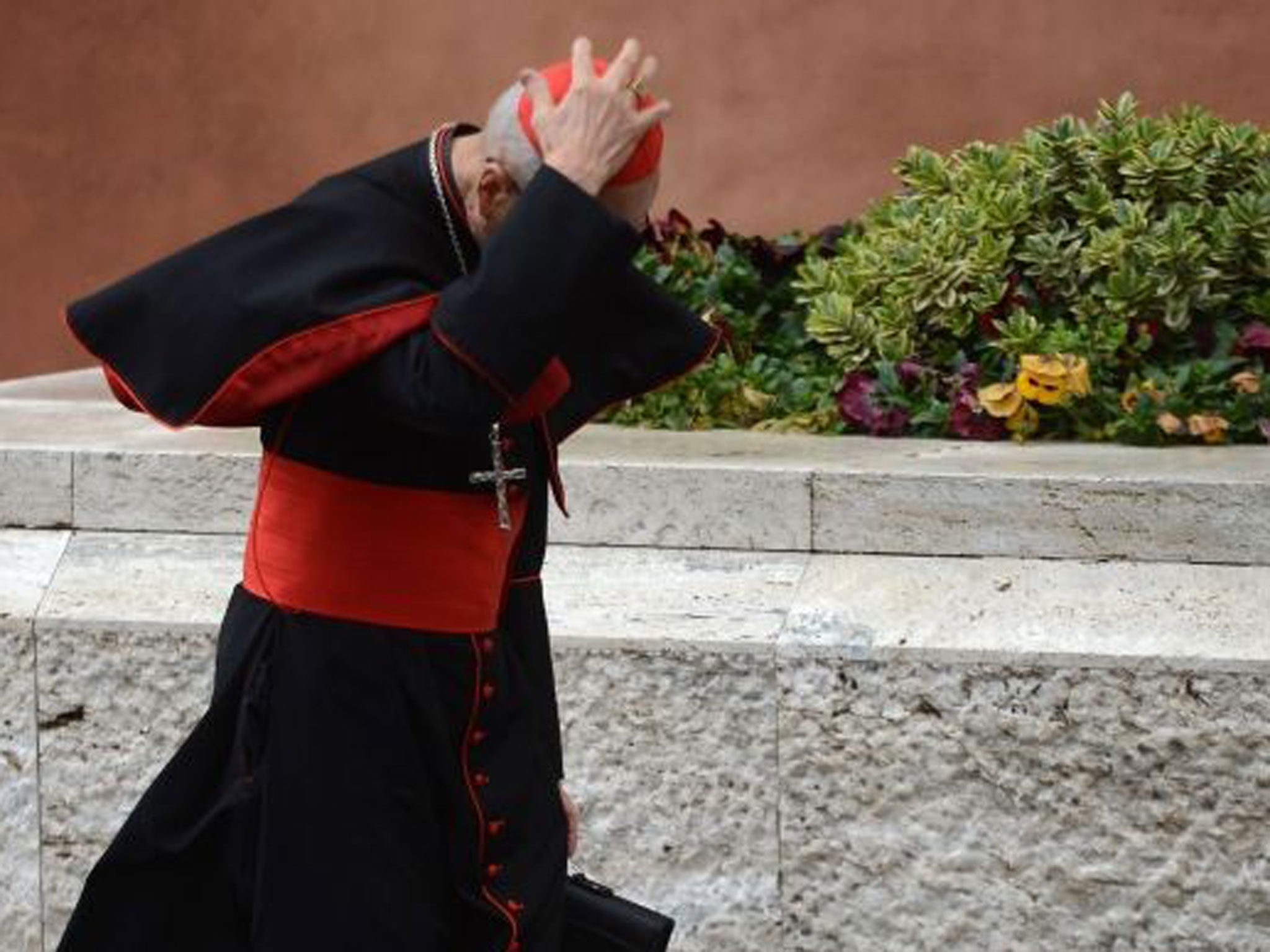Cardinals try to find consensus on new pope
Benedict XVI's insignia are destroyed as the Sistine Chapel is modified for the conclave

Your support helps us to tell the story
From reproductive rights to climate change to Big Tech, The Independent is on the ground when the story is developing. Whether it's investigating the financials of Elon Musk's pro-Trump PAC or producing our latest documentary, 'The A Word', which shines a light on the American women fighting for reproductive rights, we know how important it is to parse out the facts from the messaging.
At such a critical moment in US history, we need reporters on the ground. Your donation allows us to keep sending journalists to speak to both sides of the story.
The Independent is trusted by Americans across the entire political spectrum. And unlike many other quality news outlets, we choose not to lock Americans out of our reporting and analysis with paywalls. We believe quality journalism should be available to everyone, paid for by those who can afford it.
Your support makes all the difference.Firefighters installed a special top on the Sistine Chapel chimney yesterday, ready for the signal to the world that a new pope has been elected, as the Vatican took measures to end Benedict XVI's pontificate.
While construction workers prepared the interior of the frescoed Sistine Chapel for Tuesday's start of the conclave, officials elsewhere in the Apostolic Palace destroyed Benedict's fisherman's ring and the personal seals and stamps for official papers. The act, coupled with Benedict's public resignation and pledge of obedience to the future pope, is designed to signal a definitive end of his papacy so there is no doubt in the church that a new pope is in charge.
The developments all point toward the momentous decision to confront the Catholic church: Tuesday's start of the conclave to elect a new pope to lead the world's 1.2 billion Catholics and try to solve the problems facing the church.
The Vatican outlined the timeline for the balloting, and confirmed that the bells of St Peter's Basilica will ring once a pope has been elected. But Vatican officials also acknowledged that there is some uncertainty about the whole endeavour, given the difficulties in discerning the colour of smoke that will snake out of the Sistine chimney – black if no pope has been elected, white when a victor has emerged. A Vatican spokesman, the Rev Federico Lombardi, laughed off concerns, saying that some "suspense" was all part of the beauty of the process.
Despite talk of likely successors, there appears to be no front-runner, and a week of deliberations has exposed sharp divisions among cardinals about some of the pressing problems facing the church, including governance of the Holy See.
Fr Lombardi said the pre-conclave meetings had given the cardinals a chance to discuss the "profile, characteristics, qualities and talents" a future pope must have. Those closed-door deliberations, he said, provided an opportunity for discussion and information gathering so that the cardinals could go into the conclave ready to cast their ballots. Then it's a matter of consensus-building to reach the two-thirds majority needed to elect a pope – a process that in the past century has never taken more than a five days.
Benedict himself was elected on the fourth round of voting in 2005, a day after the conclave began – one of the fastest papal elections in recent times. His predecessor, John Paul II, was chosen following eight ballots over three days in 1978.
On Tuesday, the conclave will begin with a morning Mass in St Peter's, followed by a procession into the Sistine Chapel and the first round of secret balloting in the afternoon. If black smoke issues from the chapel chimney to indicate that there is no victor, the cardinals will retire for the day. They will return on Wednesday for two rounds of balloting in the morning and two rounds in the afternoon, a process repeated each day until a pope emerges.
Yesterday, for the sixth day running, cardinals met behind closed doors to discuss the problems of the church. Meanwhile, distinctly modern adaptations were being made to the Sistine Chapel. Begun in 1473 by Baccio Pontelli for Pope Sixtus IV, the chapel has frescoes by Michaelangelo, Botticelli and Ghirlandaio. Workers were staple-gunning felt carpeting to a wooden floor that has been laid over the chapel's precious marble designs, and signal-jamming devices were being tested. The equipment has been installed to prevent any mobile phone or eavesdropping devices from working.
However, to communicate the decisions of the 115 cardinals, the Sistine relies on simple technology: a 100-year-old cast iron stove burns their ballot papers beneath a humble chimney.
Subscribe to Independent Premium to bookmark this article
Want to bookmark your favourite articles and stories to read or reference later? Start your Independent Premium subscription today.
Join our commenting forum
Join thought-provoking conversations, follow other Independent readers and see their replies
Comments